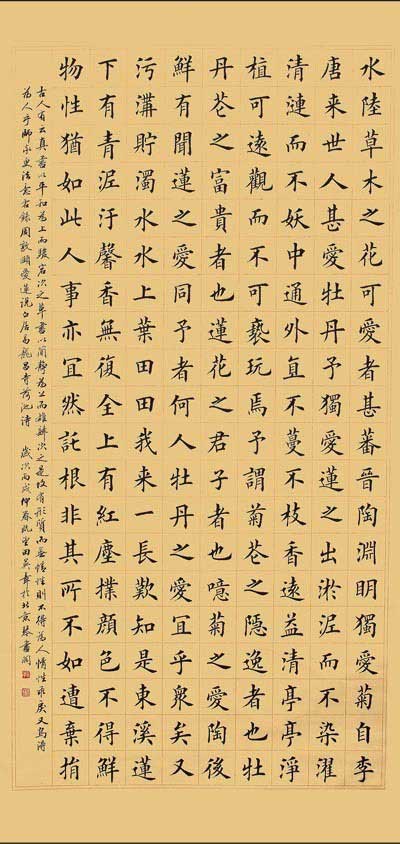Simple calculation of calligraphy and painting size

Rice paper is generally divided into three types, four feet, five feet, six feet, eight feet, two feet, etc., and now there are special formats. However, the ruler used in calculations when trading calligraphy and painting works is different from the ruler we measure today. It refers to the commonly known Luban ruler invented by Lu Ban, the originator of Chinese carpenters. Take the four-foot xuan as an example. Its size is 68 × 136 centimeters. If it is split or triple-cut, it means cutting it in half or evenly into three parts. Generally speaking, the whole four-foot piece is eight square feet, and if it is split, it is four square feet. The ruler is approximately 33 x 33 centimeters.
Here's a quick sizing chart:
(1) Sketch 33×33 cm1 square foot
(2) Sketch 45×33 cm1.4 square feet
(3) Four feet by three inches 68×45 cm2.8 square feet
(4) Four feet by four inches 68×34 cm4 square feet
(5) Four-foot square 68×68 cm4 square feet
(6) Four feet long strip 34×136 cm4 square feet
(7) Four feet of paper 68×136 cm8 square feet
(8) Five feet of whole paper 81×155 cm11.5 square feet
(9) Six feet of whole paper 96×178 cm15.6 square feet
(10) Eight-foot full paper 122×244 cm27 square feet
(11) Two feet long paper 144×366 cm48 square feet
(12) Six feet long paper 200×498 cm92 square feet
Here are two calculation formulas:
(1)Length (meter) × width (meter) × 9 = square feet
Example: Four feet of paper is 1.36×0.68 meters×9=8.32 square feet. (Basic: 1 square meter is equal to 9 square feet, and the unit of calculation is meters.)
(2)Length×width/0.1089=square feet
Example: Four feet of paper is 1.36×0.68 meters/0.1089=8.4 square feet. (Based on: 33 × 33 centimeters = 1089 square centimeters. The unit of calculation is centimeters.)
It can be seen that the sizes calculated by these two calculation methods are similar, so you only need to remember one.









